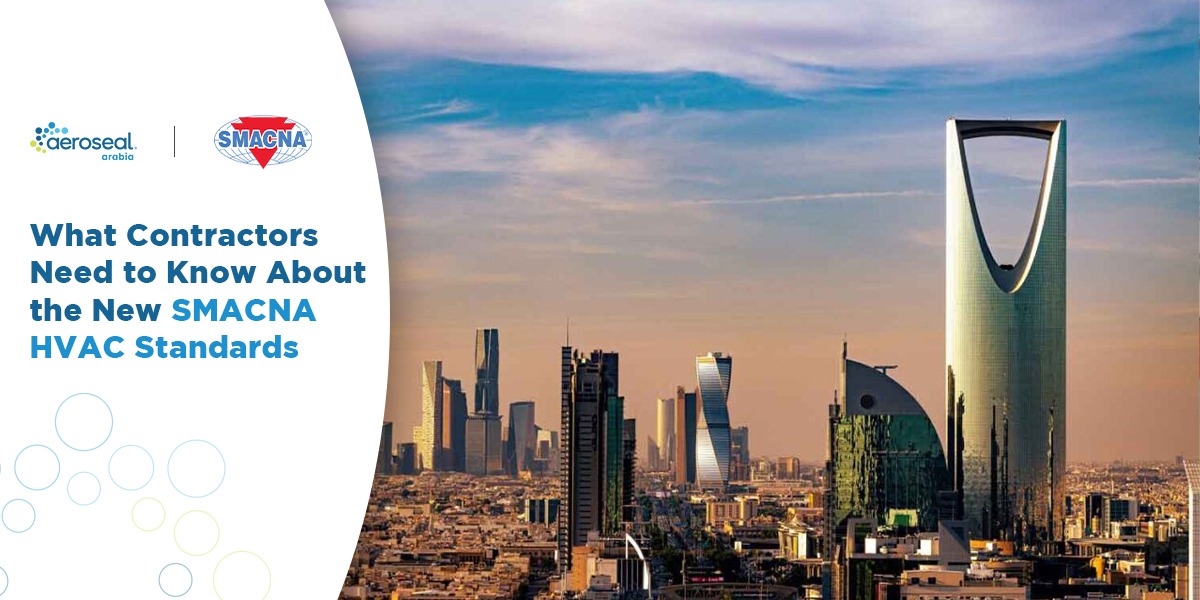
What Contractors Need to Know About the New SMACNA HVAC Standards
Introduction
The HVAC industry continues to evolve as building codes, sustainability targets, and client expectations grow more demanding. For contractors, staying ahead means understanding not only how to design and install duct systems, but also how to meet airtightness and efficiency requirements that are now integral to project success. The release of the new SMACNA HVAC Duct Construction Standards Manual, 4th Edition, represents a significant shift in duct fabrication and installation practices.
For contractors, the updates go beyond technical details. They highlight the industry’s increasing focus on air leakage, performance testing, and advanced sealing methods all of which directly impact project timelines, compliance, and profitability.
Why the New SMACNA Standards Matter
The Sheet Metal and Air Conditioning Contractors’ National Association (SMACNA) has long set the benchmark for duct construction. The 4th edition builds on decades of expertise but introduces changes that reflect current challenges: energy efficiency, indoor air quality, and airtightness verification.
Contractors who rely on outdated practices risk failing inspections, facing costly rework, or losing bids to competitors who are adopting these standards. Understanding the updates ensures contractors remain compliant, deliver higher-performing systems, and strengthen their reputation in an increasingly competitive market.
Key Updates in the 4th Edition of SMACNA HVAC Standards
1. Recognition of Spray and Aerosolized Duct Sealants
Perhaps the most notable update is the formal inclusion of spray-applied and aerosolized duct sealants. This reflects the growing recognition that traditional tape and mastic alone are insufficient for eliminating duct leakage at scale. Contractors can now confidently adopt technologies like Aeroseal, which seal leaks from the inside with minimal disruption, and know that these practices align with SMACNA standards.
2. Spiral Flat Oval Duct Tables
The manual introduces new tables for spiral flat oval ducts, covering both positive and negative pressure applications. For contractors working on large commercial projects, this addition provides clearer design guidance and helps ensure ducts are fabricated to withstand specified operating conditions.
3. Internal Supports for Flat Oval Ducts
Updates include expanded options for internal supports within flat oval ducts. This improves installation flexibility and durability while reducing the risk of duct deformation in high-pressure systems.
4. Broader Range of Liner Types
The standards now include non-fiberglass liner types, reflecting the growing use of alternative insulation and acoustic solutions. Contractors should be aware of these specifications when sourcing materials and working with architects or consultants who specify alternative liners for health, safety, or performance reasons.
5. Round Industrial Duct Construction
Added details address lined round industrial ducts, offering guidance for specialized applications in heavy-duty commercial or industrial environments. Contractors working with healthcare, pharmaceutical, or manufacturing clients will find these particularly relevant.
6. Hanger Requirements and Illustrations
The manual provides clearer details on hangers, including spacing and width for flexible ducts. For contractors, this eliminates ambiguity during inspections and helps standardize installation quality across teams.
7. Spiral Fittings Guidance
New guidance covers spiral fittings, a growing choice in large commercial projects due to their efficiency and airflow performance. These updates support contractors in ensuring their designs meet both structural and performance requirements.
What These Changes Mean for Contractors
1. Increased Focus on Duct Leakage Testing
SMACNA’s recognition of aerosol sealants underscores the industry’s priority on reducing duct leakage. Contractors should expect more clients, engineers, and regulators to require HVAC air duct leakage testing as part of project delivery. Preparing for this means investing in proper testing equipment and training staff on compliance reporting.
2. Alignment with Building Codes and Green Standards
Many regions are tightening building energy codes, emphasizing airtightness and efficiency. The SMACNA updates align with these requirements, helping contractors demonstrate compliance and avoid penalties. Contractors who adopt the new standards early can position themselves as leaders in sustainable HVAC practices.
3. Competitive Advantage with Advanced Sealing Technologies
The inclusion of aerosolized sealants is not just a technical note it’s an opportunity. Contractors who adopt next-generation sealing methods can deliver measurable results: reduced leakage, lower energy bills, and better comfort for occupants. This creates a clear value proposition in proposals and can differentiate contractors in competitive bids.
4. Better Documentation and Inspections
The new hanger illustrations, duct liner updates, and fitting specifications mean inspectors will have clearer benchmarks. Contractors must ensure their teams are familiar with the details to avoid project delays or costly corrections.
Best Practices for Contractors Moving Forward
- Train Your Team: Ensure project managers, site supervisors, and installers are up to date with the new SMACNA standards.
- Adopt Advanced Sealing Methods: Incorporate aerosolized duct sealing as a standard offering, especially for large or complex projects.
- Invest in Testing Equipment: Prepare for increased demand for duct leakage testing by equipping teams with the right tools.
- Collaborate Early: Work with architects, engineers, and consultants early in the design stage to align on duct standards, materials, and sealing methods.
- Document Everything: Maintain clear compliance records, especially when bidding on government or high-profile projects.
Conclusion
The release of the SMACNA HVAC Duct Construction Standards, 4th Edition, marks a pivotal shift for contractors. Beyond technical updates, the new manual signals the industry’s commitment to airtight, efficient, and high-performing duct systems.
Contractors who embrace these changes will not only remain compliant but also gain a competitive edge in delivering cost-effective, sustainable solutions for their clients. By integrating advanced sealing technologies, prioritizing duct leakage testing, and keeping teams trained on the latest requirements, contractors can future-proof their business and thrive in a market that increasingly values efficiency and performance.



